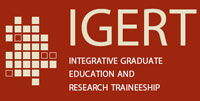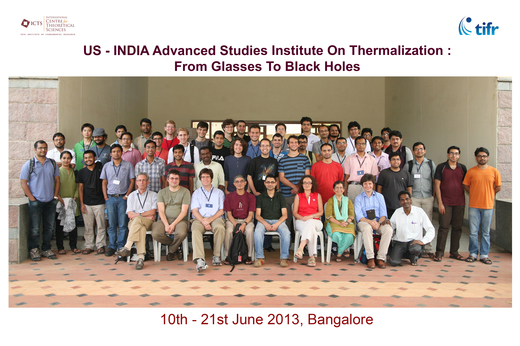Brandeis has just been awarded an NSF Integrative Graduate Education and Research Traineeship (IGERT) grant in the mathematical sciences. The grant, titled Geometry and Dynamics: integrated education in the mathematical sciences, is designed to foster interdisciplinary research and education by and for graduate students across the mathematical and theoretical sciences, including chemistry, economics, mathematics, neuroscience, and physics. It is structured around a number of themes common to these disciplines: complex dynamical systems, stochastic processes, quantum and statistical field theory; and geometry and topology. We believe that it is the first IGERT awarded for the theoretical (as opposed to laboratory) sciences, and are very excited about what we believe to be a highly novel program which will cement existing interdepartmental relationships and encourage exciting new collaborations in the mathematical sciences, including collaborations between the natural sciences and the International Business School (IBS).

The resolution of a singularity that develops along Ricci flow, understood mathematically by Grigori Perelman. If the red manifold represents the target space of a string, it is conjectured that the corresponding two-dimensonal field theory describing the string undergoes confinement and develops a mass gap for the degrees of freedom corresponding to the singular regime.
The award, for $2,867,668 spread out over five years, provides funds for graduate student stipends, travel, seminar speakers, and interdisciplinary course development. It contains activities and research opportunities in partnership with the New England Complex Systems Institute (NECSI) in Cambridge, MA. It also provides opportunities for research internships at the International Center for the Theoretical Sciences in Bangalore.
The PIs on the grant are: Bulbul Chakraborty (Physics); Albion Lawrence (Physics: lead PI); Blake LeBaron (IBS); Paul Miller (Neuroscience); and Daniel Ruberman (Mathematics). There are 11 additional affiliated Brandeis faculty across biology, chemistry, mathematics, neuroscience, physics, and psychology. Contact Albion Lawrence (albion@brandeis.edu) for more information about the program.

-
Arrays of repulsively coupled Kuramoto oscillators on a triangular lattice organize into domains with opposite helicities in which phases of any three neighboring oscillators either increase or decrease in a given direction. Fig. (a) illustrates these two helicities in which cyan, ma- genta and blue vary in opposite directions. In Fig. (b), white and green regions represent domains of opposite helicities. The red regions indicate the frequency entrained oscillators, which are predominantly seen in the interior of the domains.
Admission to the program is handled through the Ph.D programs in the various disciplines:
 The Brandeis IGERT program in “Geometry and Dynamics” is holding its Summer Institute from June 25-28. This is a series of lectures aimed at graduate students on the mathematical & theoretical side of the sciences, on a broad spectrum of topics — of course, postdocs, faculty, and sufficiently advanced undergraduates should enjoy these as well.
The Brandeis IGERT program in “Geometry and Dynamics” is holding its Summer Institute from June 25-28. This is a series of lectures aimed at graduate students on the mathematical & theoretical side of the sciences, on a broad spectrum of topics — of course, postdocs, faculty, and sufficiently advanced undergraduates should enjoy these as well.


 Textbook thermodynamics treats equilibrium states of large systems, in which macroscopic variables (temperature, pressure and so on) remain static, and how small perturbations of such systems relax with time. There have been a number of exciting recent developments in studying (a) how such equilibrium states are reached in a closed quantum or classical system, and (b) generalizations of thermodynamics to small systems and to systems that are intrinsically out of equilibrium. This work spans both classical and quantum mechanics, and ties together biological systems, soft matter (such as glasses and granular systems), quantum matter, nuclear physics, quantum information, quantum gravity, and string theory.
Textbook thermodynamics treats equilibrium states of large systems, in which macroscopic variables (temperature, pressure and so on) remain static, and how small perturbations of such systems relax with time. There have been a number of exciting recent developments in studying (a) how such equilibrium states are reached in a closed quantum or classical system, and (b) generalizations of thermodynamics to small systems and to systems that are intrinsically out of equilibrium. This work spans both classical and quantum mechanics, and ties together biological systems, soft matter (such as glasses and granular systems), quantum matter, nuclear physics, quantum information, quantum gravity, and string theory.

